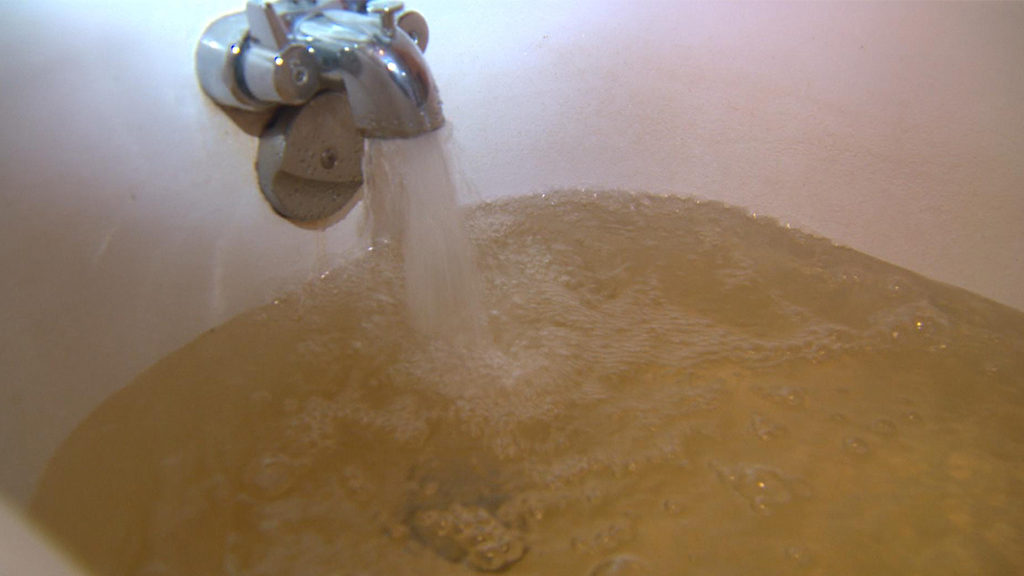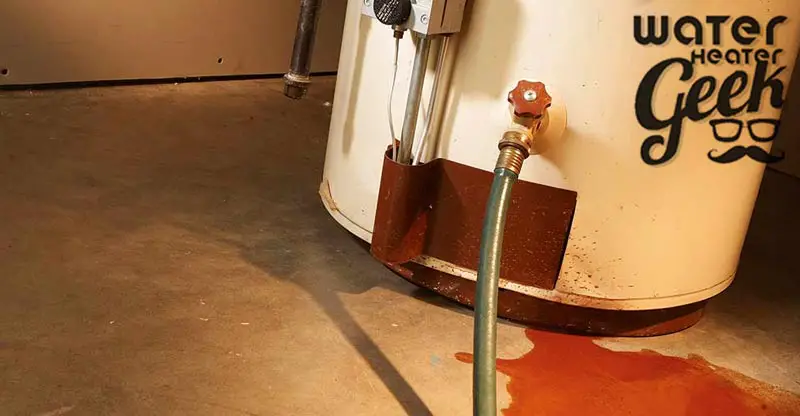If you’ve ever noticed your hot water heater’s water looking a little bit discolored, you’re not alone. This is a common problem that can be caused by a number of different things. In most cases, the discoloration is harmless and will go away on its own.
However, there are a few instances where it can be indicative of a more serious problem.
The most common cause of discolored water is simply the presence of minerals in the water. Over time, these minerals can build up on the inside of the hot water heater and cause the water to take on a yellow, brown, or orange tint.
This is especially common if you have hard water. In most cases, the discoloration will be more pronounced when the hot water heater is first turned on after a period of being turned off. Once the water has had a chance to circulate, the discoloration will usually fade.
If you’ve noticed that your hot water has started to look discolored, it’s likely due to your water heater. Over time, sediment and minerals can build up in your water heater, causing the water to become discolored.
If you’re seeing discolored water, it’s important to flush your water heater to remove the sediment and minerals.
Flushing your water heater is a simple process, and there are a few ways to do it. You can use a garden hose to flush your water heater, or you can remove the drain valve and let the water flow out until it runs clear.
Once you’ve flushed your water heater, the water should run clear again.
If the problem persists, you may need to replace your water heater.
How to bleed a hot water tank if you have discolored water
Why is my water brown after installing new water heater?
If your water heater is brand new, the most likely explanation for brown water is that there is rust in the tank. This is not uncommon, and is usually not cause for alarm. The rust is most likely coming from the anode rod, which is made of magnesium or aluminum and is used to protect the tank from corrosion.
Over time, the anode rod will corrode and disintegrate, and the pieces will end up in the water. This is perfectly normal, and the water will eventually clear up on its own.
If the water is coming out brown when you first turn on the tap, it’s probably due to sediments that have settled in the bottom of the tank.
This is also normal, and the sediments will eventually be flushed out of the system.
If you’re concerned about the brown water, you can try running the cold water tap for a few minutes to see if the water clears up.
How long does it take for water to clear after replacing water heater?
Assuming you are referring to the time it takes for the water to run clear after replacing the water heater, the answer is it depends. If you are simply replacing the water heater, then it will only take a few minutes for the water to run clear. However, if you are also replacing the pipes leading to and from the water heater, it could take a few hours for the water to run clear.
Why does my hot water look discolored?
If your hot water looks discolored, it’s likely due to rust in your water heater. Over time, the metal of your water heater will start to corrode, and the rust will mix in with the water. This can cause your water to take on a reddish or brownish tint.
If you notice your hot water is looking discolored, it’s important to have it checked out by a professional. Rust in your water heater can lead to serious problems, including leaks and complete failure of the unit. If you catch the problem early, though, it can often be fixed with a simple water heater flush.
This involves draining all the water out of the unit and then refilling it with fresh water. This will remove the rust and help to prolong the life of your water heater.
See also: Propane Vs Kerosene Torpedo Heater
Should water be cloudy after replacing the water heater?
If you’ve just replaced your water heater, it’s not unusual for the water to be cloudy for a while. This is usually caused by air bubbles in the water, and is nothing to be concerned about. The cloudiness should clear up on its own after a day or two.

Credit: www.arabamericannews.com
Rusty water coming from new hot water heater
If you’ve recently installed a new hot water heater and notice that the water coming out of it is rusty, don’t panic! This is actually a fairly common occurrence and is usually nothing to worry about.
The most likely explanation is that the water in your area is naturally high in iron.
When the water heater is first installed, the water will likely be clear for a while as the iron has not had a chance to build up yet. But over time, the iron will start to accumulate in the tank and will eventually start to come out when you turn on the hot water.
If you’re not sure if your water is high in iron, you can have it tested.
If it is, then you may want to consider using a water filter to help remove some of the iron before it has a chance to build up in your hot water heater.
In most cases, rusty water from a new hot water heater is nothing to worry about.
New water heater yellow water
If you’ve noticed that the water coming from your water heater is yellow, it’s likely due to a build-up of sediments in the tank. While sediments aren’t harmful, they can cause your water heater to operate less efficiently and shorten its lifespan.
If you have a sediment problem, the best solution is to flush the tank.
This will remove the sediments and restore your water heater to peak performance. Flushing is a fairly simple process, but if you’re not comfortable doing it yourself, you can always call a plumber.
Brown hot water after plumbing work
If you’ve ever had your plumbing worked on, you may have noticed that your hot water turns brown for a little while afterwards. This is perfectly normal and is nothing to worry about. The brown water is a result of the new pipes or fixtures being installed and is nothing more than rust.
It should clear up on its own after a few days, but if it doesn’t, you can always run your hot water for a few minutes to help flush it out.
Conclusion
If your new hot water heater is discoloring your water, there are a few things you can check. First, make sure that the anode rod is properly installed. This rod helps to prevent corrosion in the tank.
If the anode rod is loose or missing, it can cause the water to become discolored.
Another possibility is that the water heater is not set to the correct temperature. The temperature should be set between 120 and 140 degrees Fahrenheit.
If it is set too low, the water will not be hot enough to dissolve the minerals in the water, which can cause the water to become discolored.
If you have checked the anode rod and the temperature and the water is still discolored, it is likely that there is a problem with the heating element. This is something that should be checked by a professional.
You Can Also Read:

